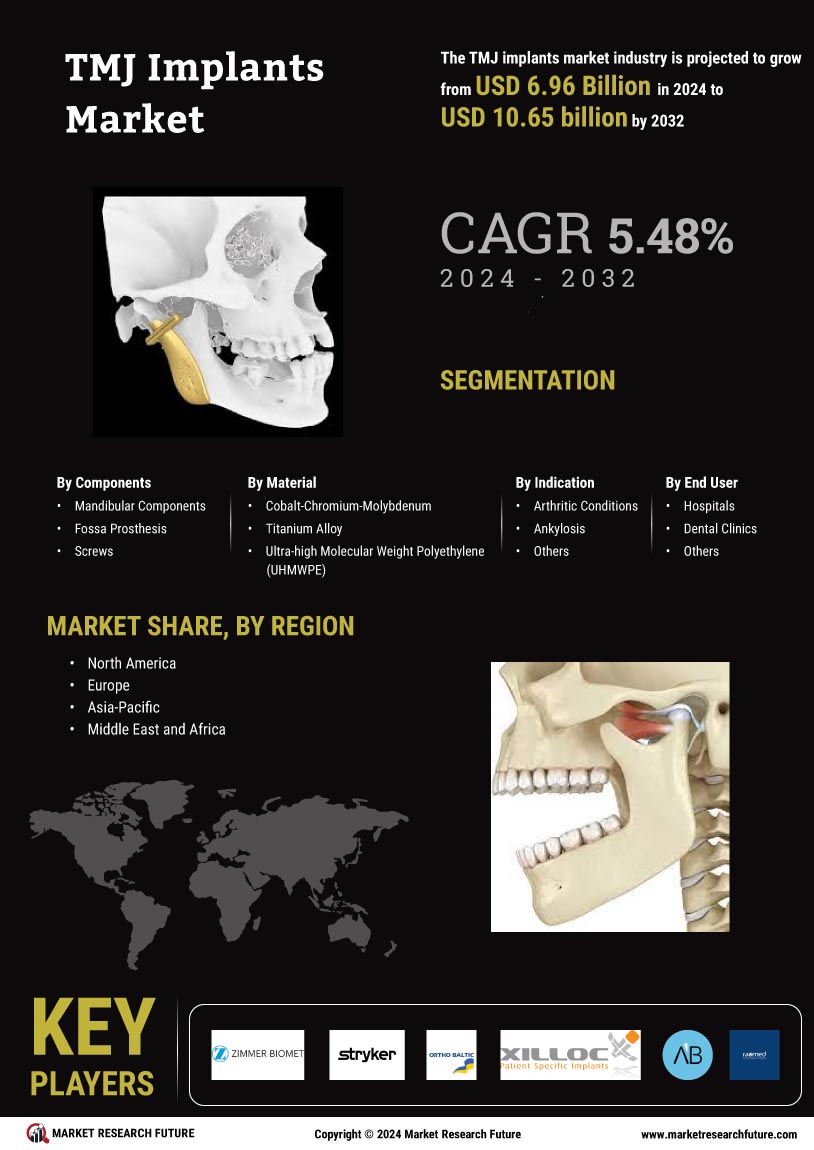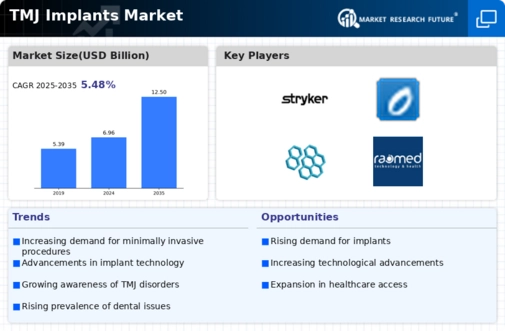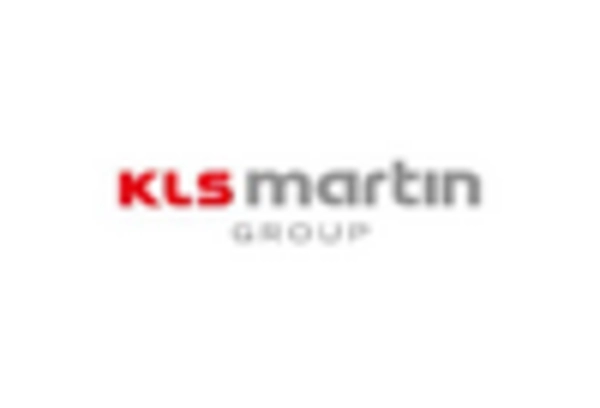Rising Awareness and Education
There is a growing awareness and education surrounding TMJ disorders, which is positively impacting the TMJ Implants Market. Healthcare professionals are increasingly recognizing the importance of diagnosing and treating TMJ disorders, leading to more patients being referred for surgical options. Educational campaigns aimed at both patients and providers are helping to demystify TMJ disorders, encouraging individuals to seek treatment sooner. This heightened awareness is likely to result in an uptick in the number of patients opting for TMJ implants as a viable treatment option. As more information becomes available, the TMJ Implants Market stands to benefit from an expanding patient base seeking effective solutions.
Improved Reimbursement Policies
Changes in reimbursement policies are playing a crucial role in shaping the TMJ Implants Market. As insurance providers begin to recognize TMJ disorders as legitimate medical conditions requiring surgical intervention, coverage for TMJ implants is becoming more accessible. This shift is likely to alleviate financial burdens for patients, making them more inclined to pursue surgical options. Enhanced reimbursement frameworks can lead to increased adoption of TMJ implants, as patients are more willing to undergo procedures when they are financially supported. Consequently, the TMJ Implants Market may experience growth as favorable reimbursement policies encourage more individuals to seek treatment for their TMJ disorders.
Increasing Geriatric Population
The aging population is a significant factor contributing to the growth of the TMJ Implants Market. As individuals age, they are more susceptible to degenerative joint diseases, including TMJ disorders. The World Health Organization projects that the number of people aged 60 years and older will double by 2050, reaching over 2 billion. This demographic shift is expected to increase the demand for surgical interventions, including TMJ implants, as older adults seek relief from chronic pain and improved quality of life. Consequently, the TMJ Implants Market must adapt to cater to the unique needs of this population, potentially leading to the development of specialized implant solutions.
Advancements in Implant Technology
Technological innovations in implant design and materials are significantly influencing the TMJ Implants Market. Recent developments have led to the creation of more durable and biocompatible materials, which enhance the longevity and effectiveness of TMJ implants. For instance, the introduction of 3D printing technology allows for customized implants tailored to individual patient anatomies, improving surgical outcomes. Furthermore, advancements in minimally invasive surgical techniques reduce recovery times and complications, making TMJ implants a more attractive option for both patients and surgeons. As these technologies continue to evolve, they are likely to drive growth in the TMJ Implants Market, as healthcare providers adopt these cutting-edge solutions.
Rising Prevalence of TMJ Disorders
The increasing incidence of temporomandibular joint (TMJ) disorders is a primary driver for the TMJ Implants Market. Studies indicate that approximately 10 million individuals in the United States alone suffer from TMJ-related issues, which can lead to chronic pain and dysfunction. This growing patient population necessitates effective treatment options, thereby propelling demand for TMJ implants. As awareness of TMJ disorders rises, healthcare providers are more likely to recommend surgical interventions, including implants, to alleviate symptoms. The TMJ Implants Market is thus positioned to expand as more patients seek solutions for their conditions, highlighting the need for innovative implant technologies that can enhance patient outcomes.


















Leave a Comment